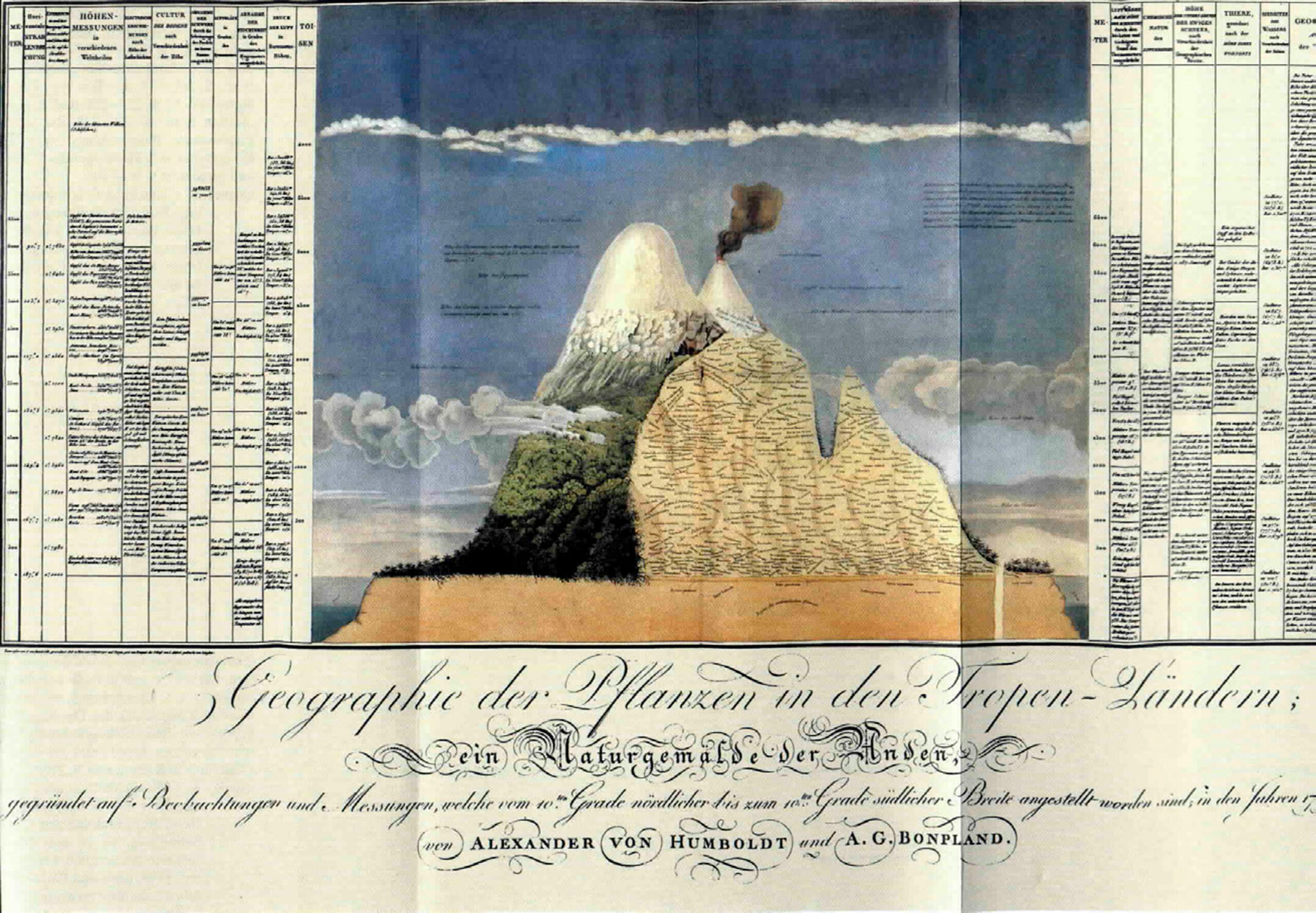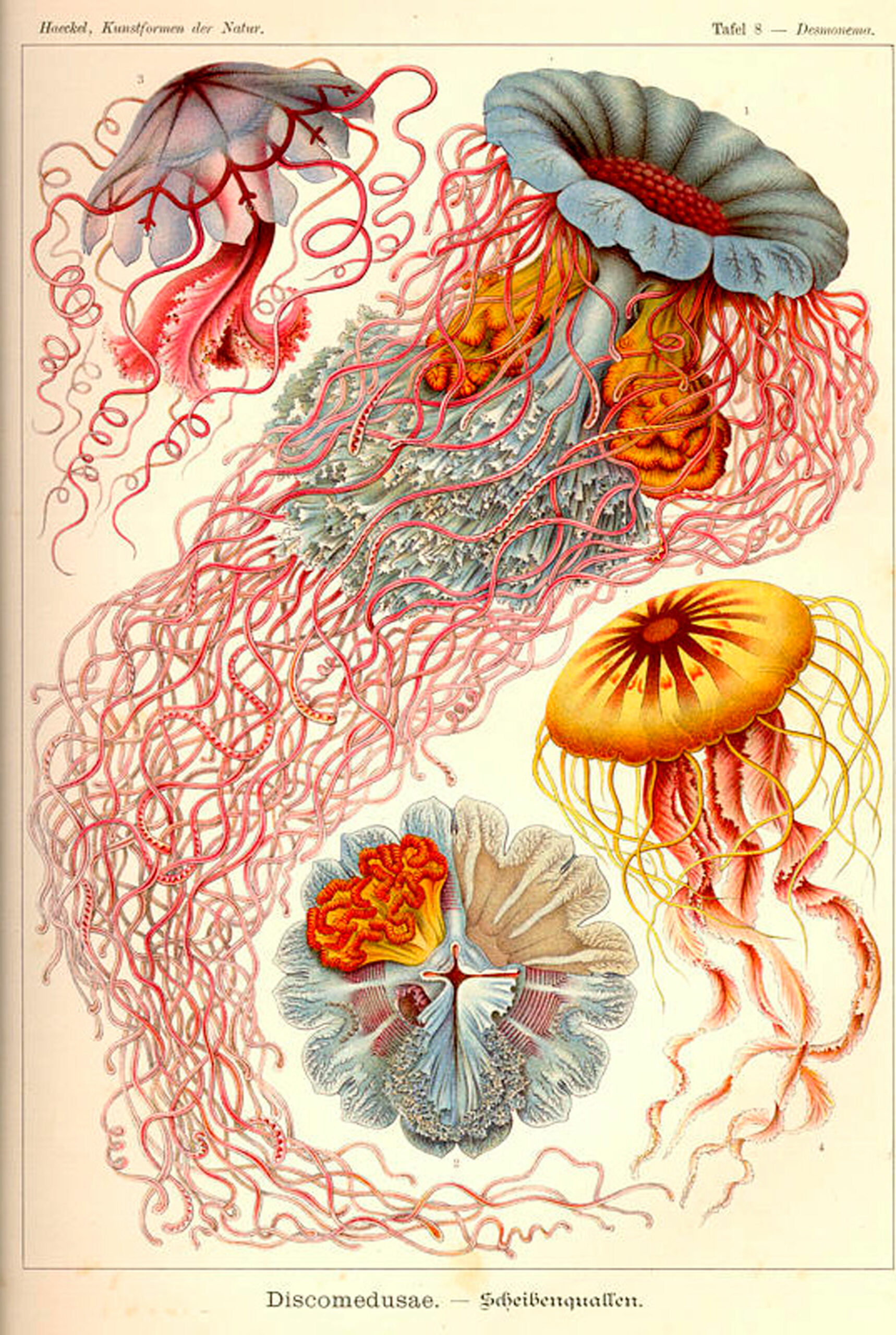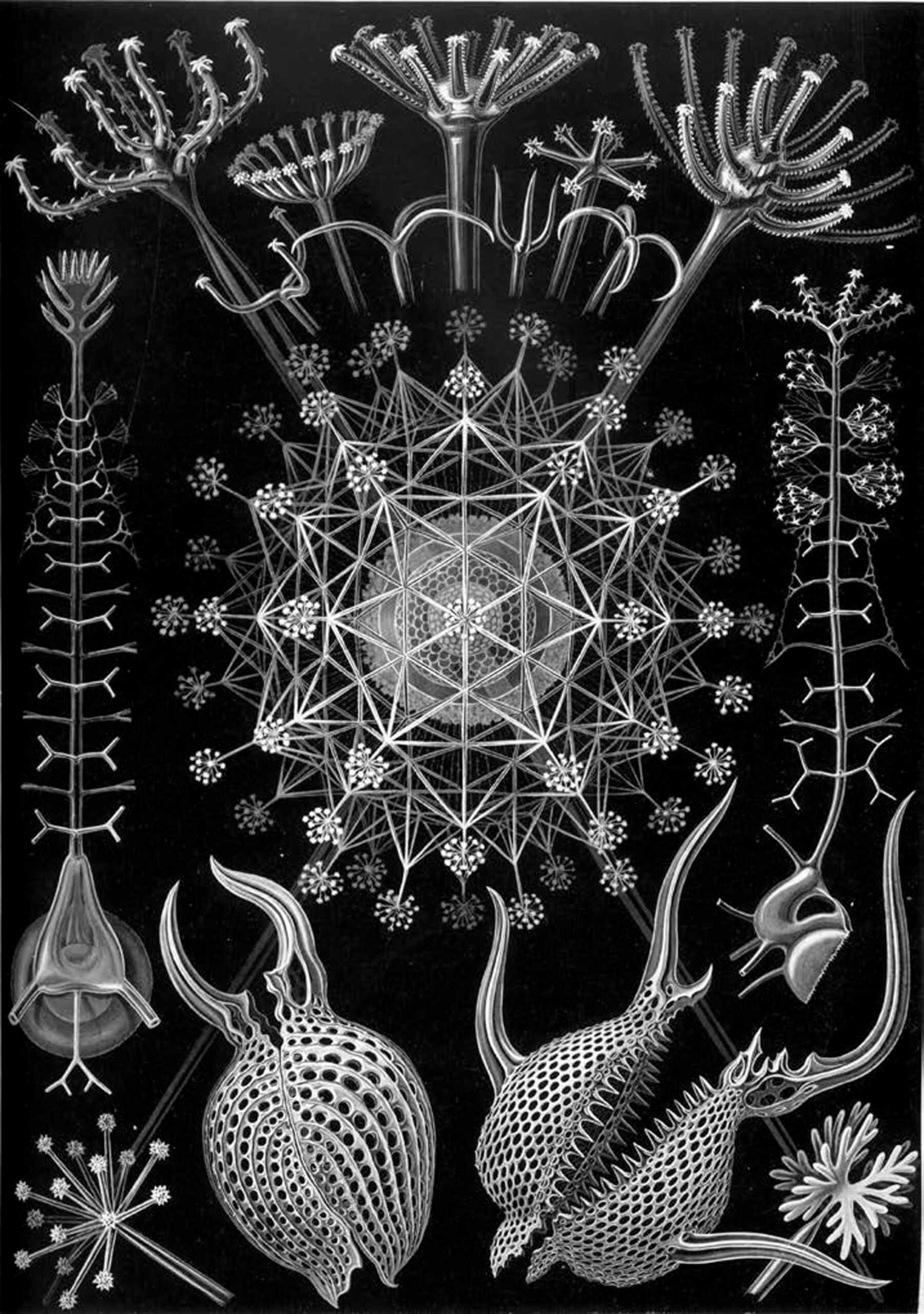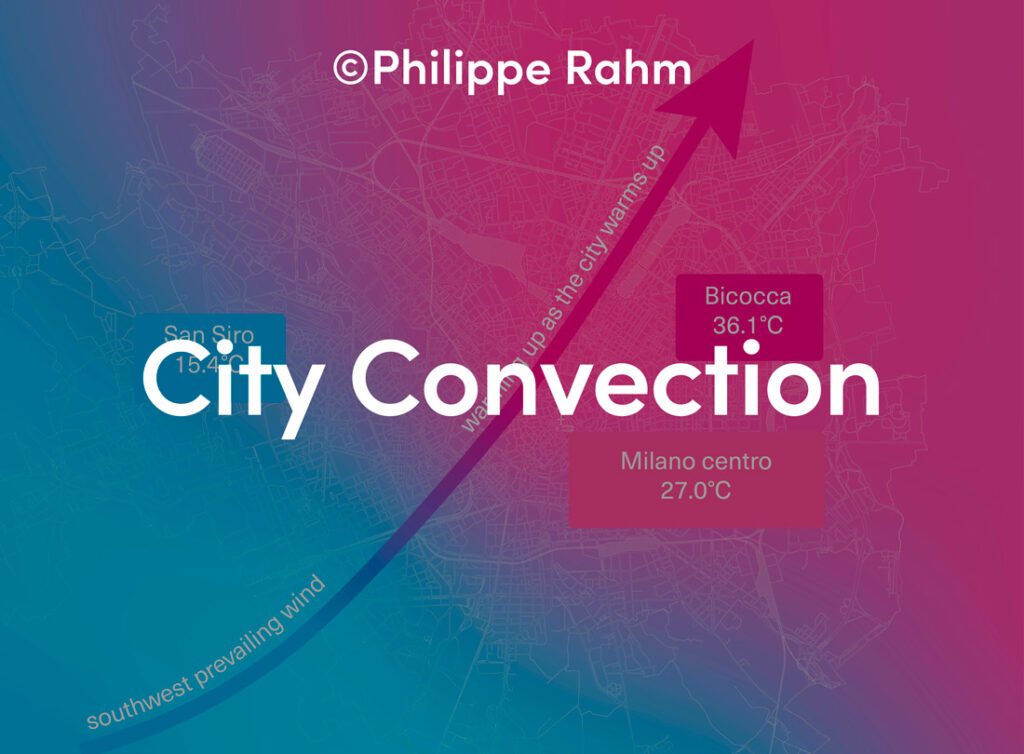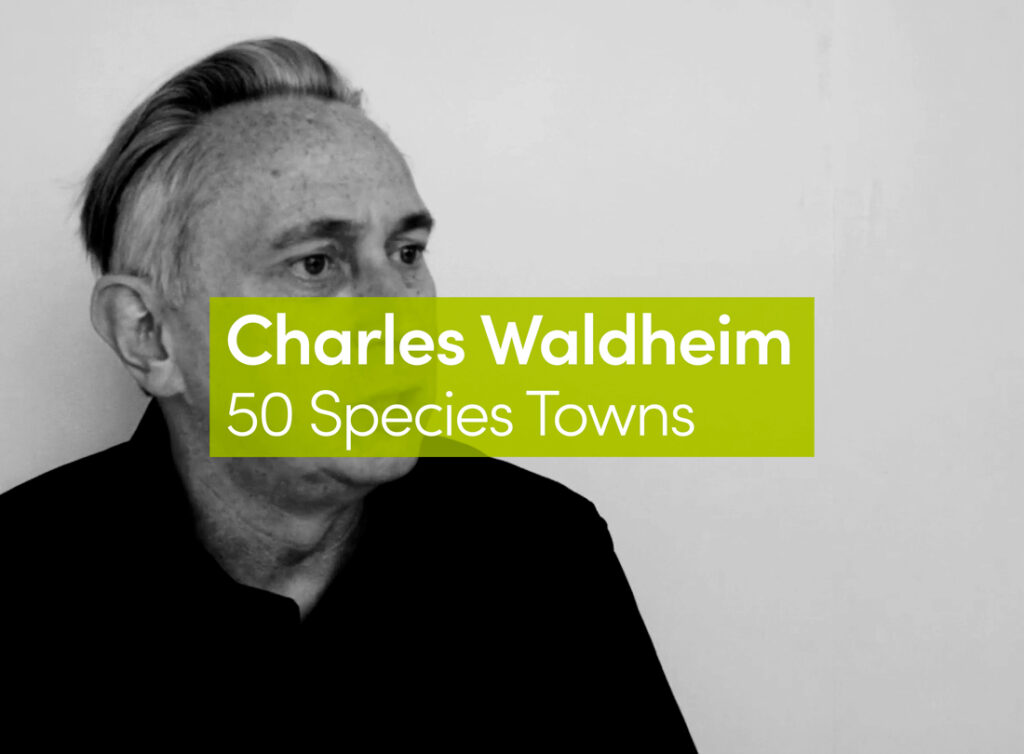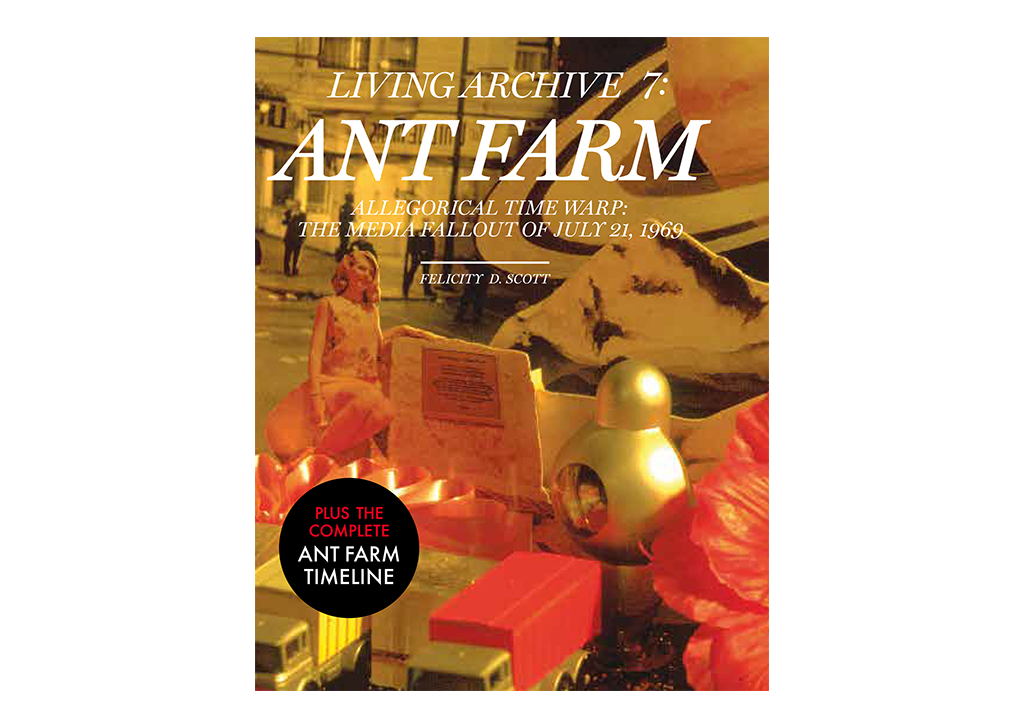Lydia Kallipoliti
The way we classify things has a profound impact on disciplinary structures.
The means by which we organize information emerges from and affects our social, political, intellectual, and cultural constructs. The legacy of ecological ideas in architecture evidences this effect. The permeation of organizational tools in design disciplines is not innocent. It is not merely about facilitating and managing knowledge; it also transforms the nature of design, with no return.
 Diagrammatic Histories of Ecological Design
Diagrammatic Histories of Ecological Design
The history of ecology is in many respects rooted in the history of classification. The ubiquity of ecological concerns, as these have unfolded since the nineteenth century, has turned persistent taxonomical thinking into a type of design endeavor, in which the observation and analysis of plants and organisms are given form and value. Taxonomical organizational tools have never been neutral, not even before language was applied to the representation of ecosystems and the feedback cycles of their respective subsystems. The project of organizing, visualizing, labeling, and classifying life that many botanists pursued in the 18th century thus conflated the vision of an imagined world order with the origins of ecological design. The classification of ecosystems illustrated not simply what the world was made of, but also what it should be made of, as befit the worldview of each author who dealt with the problem. As cultural historian Hillel Schwartz points out, to observe, categorize and copy “makes us what we are… and makes the known world our own.”[14] Modes of representation embody or articulate the available ways of organizing or making sense of the world.[15]
Alexander von Humboldt’s illustration of Chimborazo volcano in Ecuador showing the distribution of plant species at different elevations of the mountain.
This line of inquiry is rooted in the work of Carl Linnaeus, the Swedish botanist, physician, and zoologist known as the “father of modern taxonomy,” as well as in the influential later taxonomical systems of the 19th-century French and Swiss botanists, Antoine-Laurent de Jussieu and Augustin Pyramus de Candolle. Parallel to these are the geo-visualized mountain drawings of German naturalist and explorer Alexander von Humboldt that inspired the then young Charles Darwin. Von Humboldt sought to map the complex interrelationships and interdependencies of plants and organisms and to render the nuanced spatial distributions underlying the natural world. Depicting scenes and phenomena from his expeditions through the Americas in novel ways, he showed cross-sections of volcanoes and mapped isothermal regions.His sectional representations collapse the empirical illustrational quality of drawings, into a single format, with the systematic quantitative organization of maps. Von Humboldt’s sectional maps eventually revealed how the shapes, sizes, and behaviors of plants co-depend on external environmental factors such as atmosphere, humidity, soil constitution, and air quality. Through poetic visual narratives they rendered visible the geophysical measurements that von Humboldt carefully made during his long journeys.
Thus, for example, the isothermal regions in his map of Chimborazo suggest a global ecology bound not by political and national territorial sovereignty, but by a world of patterns and environmental flows . Indeed, seeing form and nature as an expression of interaction, and form as an expression of environmental forces are von Humboldt’s most binding legacies. This is why many scholars argue that ecological thinking began with his drawings and foundational “Essay on the Geography of Plants”[16] of 1805.[17] Arguably, von Humboldt’s drawings did not simply demonstrate and depict existing knowledge. Rather, as historian Andrea Wulf has argued, they were inventions in their own right of what nature was and how it could be designed. What is important to recall is that systematic practice was not yet linked at this time to clearly articulated theory. As British botanist Peter Stevens contends, the period was witness to general confusion over the “shape” of nature. Botany, elements of natural history, and systematics were conflated, and systematics took a position near the bottom of the hierarchy of sciences.[18]
Table of the Animal Kingdom (Regnum Animale) from Carolus Linnaeus’s first edition (1735) of Systema Naturae. Text: I. Quadrupedia II. Aves III. Amphibia IV. Pisces V. Insecta VI. Vermes.
Ultimately, it was in the work of Ernst Haeckel, the prominent scientist, zoologist, and philosopher as well as the inventor of the term “ecology” in 1866 that one might detect visual form in the concept of evolution. Linnaeus’ system clearly represents the old episteme of taxonomizing the natural world, as his designation of class is based primarily on formal resemblances, and his organization on a top-down hierarchy. Von Humboldt’s and Haeckel’s methods, on the other hand, represent the new (at the time) way of classifying the natural world as an interlinked network of relationships among organisms. Moreover, both von Humboldt and Haeckel used the medium of drawing inventively and formatively, thus allowing it to develop a relationship with itself.
The exhaustive catalogue in Linnaeus’ Systema Naturae of 1735[19] includes 4,400 species of animals and 7,700 species of plants and was the first to use the conventional binomial nomenclature still used to name species today. His outline of the animal, plant, and mineral kingdoms is his only visual expression of these taxonomic relationships. The artists of his time made illustrated plates of the species and orders that he established, but Linnaeus himself only offered outlines, names, and textual descriptions. In The Order of Things, Michel Foucault argues that the identification of plants through plainly expressed written codes rather than illustration, “emptied [them] of all resemblances, cleansed [them] even of their colors.”[20]
Ernst Haeckel’s stem-tree of the nine human species in Natürliche Schöpfungs- Geschichte (1868).
Linnaeus believed he had been chosen by God to classify a fixed number of species on earth and to document His static and perfect natural order. Linnaeus’ grid reflects classical systems of organizing and dictating space in columns, themselves static objects whose species could be classified according to their shared physical characteristics. Simple and direct, this gridded codification gave equal privilege to each part of the grid and could essentially be used by anyone anywhere and generate the same observation. The number of plant species studied by naturalists of the time was due not to their greater interest in plant vs. animal life, but to the fact that the taxonomic hierarchy privileged organs that were visible as such.[21] Linnaeus imposed a stronger sense of hierarchy on his taxonomy of what he considered the three kingdoms of the natural world—animal, plant, and mineral. While his ordering system of the second two have been largely dismissed, that of animals as well as his binomial nomenclature for organisms remain the standard format in modern biology, despite his rejection of evolution. The clarity and stability of his system was such that Charles Darwin used it directly as evidence for his theory of descent from common ancestors through natural selection.[22]
Important to note here is that Linnaean nomenclature and classification was a product of colonialism. Prior to the first transoceanic voyages by Europeans and the beginning of the colonial enterprise, biological taxonomic systems had been based on Aristotle’s History of Animals and his pupil Theophrastus’ Enquiry into Plants or Historia Plantarum. By Linnaeus’ time, many new species had been discovered and named in newly colonized territories. Botany was born as a field of scientific inquiry inspired by the exploratory voyages that European colonial powers organized and funded around the world. Yet because their idea of a universal science of taxonomic systems disregarded indigenous knowledge, names, and local material cultures, many historians deem Linnean botanical nomenclature as purely an instrument of colonialism.[23]
Discomedusae, Plate #008 by Ernst Haeckel. Kunstformen der Natur (1904).
Horticultural societies and the practice of botany were, in fact, integral to imperialist expansion.[24] Under the banner of furthering scientific knowledge, botanists served as agents of the European empire and assumed the image of the heroic explorer. In the nineteenth century, the naturalist was not only a man skilled at observing and documenting plants and organisms, but also a traveler of fortitude with immense physical endurance. In the name of conquering uninhabitable lands and contributing to the human understanding of what constitutes the world, many botanical journeys engaged in forms of colonial violence. Yet even aside from the physical altercations that occurred in found environments and the enslaved labor involved in the enterprise, the very act of classification was on many fronts an intellectual form of violence. A disciplinary power, the classification of knowledge was a way of legitimizing it. Through it, plant and animal species were extracted from their native web of life and its interconnections and plugged into a new system of knowledge somewhere low in the hierarchical order of life. Displaced in terms of origin and place, they became part of Linnaeus’ global taxonomy.
All the same, Linnaeus’ binomial nomenclature of organisms according to their genus and species in some ways flattened the hierarchical order of life by rejecting the scala naturae (natural ladder) in which creatures had been grouped according to similarities that ordered them from lowest to highest. Linnaeus’ gridded Hippodamian classification tables in Systema Naturae established the norm for naming and numbering the world’s living wealth in boxes, one next to the other, in contradistinction from the pyramidal structure of trees. The metaphor of the tree had been an enduring legacy of classification since the days of Aristotle, as beautifully narrated by Umberto Eco in his seminal book From the Tree to the Labyrinth.[25] Linnaeus was also the first to include humans in the animal kingdom, right next to other animals, naming them Quadrupeds within the order of Anthropomorpha.
By contrast, Haeckel, who followed Linnaeus’ visual mapping of life in the known world, reinstalled the genealogical tree in his Generelle Morphologie der organismen of 1866, using illustrations to mark a substantial paradigm shift in visual mapping. Through this tree, he described the relationships between organisms in graphic terms, introducing shape and scale as decisive parameters in his classification system. Haeckel’s fervent disapproval of religion and church extended to Linnaeus’ popularity. The predominant belief before the time of Darwin and Haeckel had been that all things were fixed and timeless.
Haeckel’s conception of transformational and evolutionary processes was in sync with the views of Jean-Baptiste Lamarck, Johann Wolfgang von Goethe, and the German Romantic vitalist tradition that viewed evolution as the result of an internal force of nature rather than of arbitrary external mutations, as Charles Darwin would later argue. In The Riddle of the Universe, Haeckel describes this force as an “infinite and eternal machine of the universe” that sustains eternal and uninterrupted evolution and movement.[26]
Having coined not only the term “ecology,” but also “anthropogeny” (the study of human origins), “phylum” (the taxonomic rank between kingdom and class), and “phylogeny” (the study of the evolutionary relatedness of organisms via morphological data), Haeckel was unquestionably a pivotal figure of his period. Yet, today he is viewed as a controversial one. His 1866 stem-tree of the descent of the human species, which arranges its varieties in a hierarchy from low (Papuan and Hottentot) to high (Caucasian, including Indo-German and Semitic races), has been critiqued as a racial theory that assisted in the rise of Nazi biology in the first half of the twentieth century.[27] Darwin, too, aligned human groups on a developmental trajectory, which he saw as ranging from the “savage” races to the “civilized” ones. Thus, independent of the fact that the tree structure as a design metaphor had been recurrent in history, Haeckel and Darwin proposed schemes of racial classification that reflected and affirmed the supremacy of Europeans in the known world.[28] The belief in the inherent superiority of European civilization helped justify imperial subjugation and racial slavery and fuel new economic systems based on large-scale industrialization and the extraction of raw materials.
Phaeodaria, Plate #61 by Ernst Haeckel; an image-laden monograph of radiolarians, detailing their intricate skeletons in Kunstformen der Natur (1904).
It is therefore evident that the form and design of classifications systems construct, distribute, and leverage power. Also palpable is the way in which the visualization of taxonomies was determined by larger cultural agendas that unequivocally involved questions of race and biopolitics. Thus, for example, Haeckel used art and design as a medium to extend and expand on the documentation of living form, giving astounding forms to thousands of organisms in his milestone Kunstformen der Natur (Art Forms in Nature), which he published in ten installments between 1899 and 1904.[29] In this vast crossbreed of science and art, Haeckel along with lithographer Adolf Giltsch, depicted individual organisms while focusing on microscopic ornamental entities that were transformed in full figures—radiolarians, medusae, and echinoderms. Most of Haeckel’s sketches of radiolarians, for example, present not the creatures as a whole, but their individual structural peculiarities.[30] The organisms Haeckel depicts here come from vastly different regions of the world, including Heligoland and Australia, Thuringia, and the steppes of Africa.
Haeckel gave them names that honor his contemporaries and allies.[31] What is astonishing is the extent to which his illustrations express desires that go beyond formal classification, insinuating an understanding of evolution via the formal morphology of developing species. Indeed, the plates demonstrate that “knowledge of nature is natural aesthetics.”[32] The range of these images and their emphasis on tone, shade, texture, translucency, and color—not always true to the organisms’ nature—reveal and intensify aesthetic sensations and formal vocabularies that became intimately tied to the development of ecological thought.
Consequently, Haeckel’s work had an immediate impact on art and architecture beyond evolutionary biology. In 1896, when the relatively unknown architect RenéBinet was commissioned to design the monumental gates of the Paris Exposition Universelle of 1900, he transcribed in architectural form the microscopic organisms that were being studied by contemporary physiologists and, in particular, the plates of Haeckel. Unlike the Eiffel Tower, the gate of the 1889 Exposition Universelle and symbol of modern engineering and industrial progress, Binet’s Porte Monumentale celebrated the invisible natural world that had become accesible through the use of microscopes. It also gave physical shape to the hitherto unknown natural worlds encountered in transoceanic voyages, such as the expeditions of the British HMS Challenger between 1872 and 1876 that catalogued over four thousand newly discovered species.[33] In his 1899 correspondence with Haeckel and before beginning the gate’s construction, Binet wrote:
Paris Exposition Universelle 1900 – La Porte Monumentale by architect René Binet. Postcard published by Ernest Le Deley in Paris, France.
For about six years I have set about studying in the Library of the Museum of Paris the numerous volumes on the Challenger’s voyage, and, thanks to you, I have been able to collect a great quantity of microscopic work: Radiolaria, bryozoans, hydroids, etc. … which I have studied with the greatest care for an artistic aim: architectural, or ornamental. At present, I am building the Monumental Entrance for the Exposition of 1900 and everything, from the general composition up to the smallest details has been inspired by your studies […]. If you wish, if you allow me, I will send you the various details of the Gate and the forms from nature which will have inspired it, and you will see for yourself.[34]
As historian Robert Proctor argues, in contrast to the Eiffel Tower, Binet’s gate displaced the discourse of progress from a merely techno-industrial milieu to a broader interpretation of progress based on fundamental discoveries about the universe made in the nineteenth century that led to the development of the natural sciences and ecology. Following the esoteric ideas of German Romanticism (that vital force is immanent in nature), Haeckel linked electricity to vitalist natural principles. As Proctor points out, “It was the electrical charges between particles which began the process of transformation in nature, as particles were attracted towards each other, condensing to form substance and energy. Electricity could thus be seen as the originating and continuing force of life.”[35] In addition to transcribing the morphological characteristics of microorganisms, Binet’s Porte Monumental invites a vitalist reading by incorporating multicolored electric bulbs and lighting as architectural materials, a practice rare at the time. At night, the material elements of the gate seemingly disappeared, allowing electric current to endow artificial organic structures with life.
In sum, Haeckel’s approach to ecology and classification transformed the collective concept of time and allowed for the overlay of more than one type of organizational system on the structure of the phylogenic tree. While taxonomy and phylogeny belong to utterly different systems of logic, they remain in relative mutual coexistence to this day since modern biology combines both approaches to differentiate and classify. As already suggested, the classification of life does not simply record existing organisms as given pieces of a puzzle, but also produces and reinvents these organisms, as well as the events and environments in which their lives have unfolded in space and over time.

